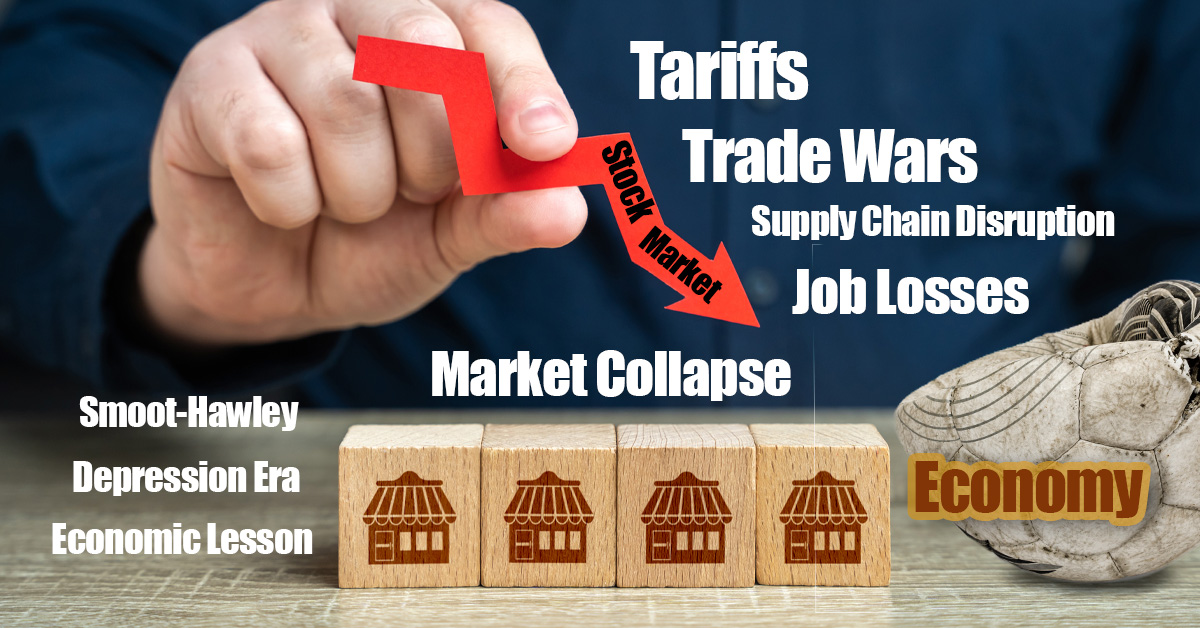by News from the Other Side
The recent characterization of the economy as a “bouncing ball” that can be dropped, only to spring back higher, represents a dangerously simplistic view of complex economic systems. This perspective suggests that disruptions like aggressive tariff policies will cause temporary pain before triggering an automatic rebound that leaves everyone better off. History and economic theory tell us this is rarely how economies actually function.
The Reality of Economic Disruption
Economies are not elastic objects that snap back into shape after compression. They are intricate networks of relationships, supply chains, investments, and human decisions. When these networks are disrupted by major policy shifts:
- Jobs lost may never return in the same form or quantity
- Supply chains, once broken, form new patterns that may bypass previously established channels
- Investment patterns shift as capital seeks stability, often flowing away from perceived instability
- Consumer behavior changes in response to price increases, creating lasting changes in demand
The True Cost of Tariffs
Tariffs function essentially as taxes on imports, and their costs are primarily borne by domestic consumers and businesses. While proponents argue they will bring manufacturing back to American shores, the reality is more nuanced:
- Immediate price increases for consumers on imported goods
- Retaliatory tariffs from trading partners that hurt American exporters
- Higher input costs for American manufacturers who use imported components
- Reduced purchasing power for consumers facing higher prices across multiple categories
Historical Perspective
We’ve seen this experiment before. The Smoot-Hawley Tariff Act of 1930 raised tariffs on over 20,000 imported goods during the Great Depression. Rather than helping the economy recover, many economists believe it deepened and prolonged the economic crisis as trading partners enacted retaliatory measures.
More recently, the 2018-2019 tariff increases resulted in:
- Approximately $80 billion in additional costs to American businesses and consumers
- Minimal reshoring of manufacturing
- Significant harm to American farmers who lost export markets
- Taxpayer-funded subsidies to offset damage to affected industries
The Complexity of Economic Recovery
Economic recovery from disruption isn’t automatic or guaranteed. It requires:
- Confidence from investors, businesses, and consumers
- Predictable policy environments that enable long-term planning
- Functional global relationships that facilitate trade
- Time for markets to adapt and find new equilibriums
Conclusion
The image of the economy as a bouncing ball that can be deliberately dropped only to spring back higher fundamentally misunderstands how economic systems work. Economies are more like complex ecosystems than simple mechanical objects. Disruptions ripple through these systems in ways that are difficult to predict and often impossible to fully control.
Real economic growth requires thoughtful, evidence-based policies that recognize this complexity rather than simplistic metaphors that promise pain now for guaranteed rewards later. The bounce-back theory offers false comfort while ignoring the lasting damage that can occur when economic relationships are severed.
News from the Other Side – Truth Matters






Recent Comments